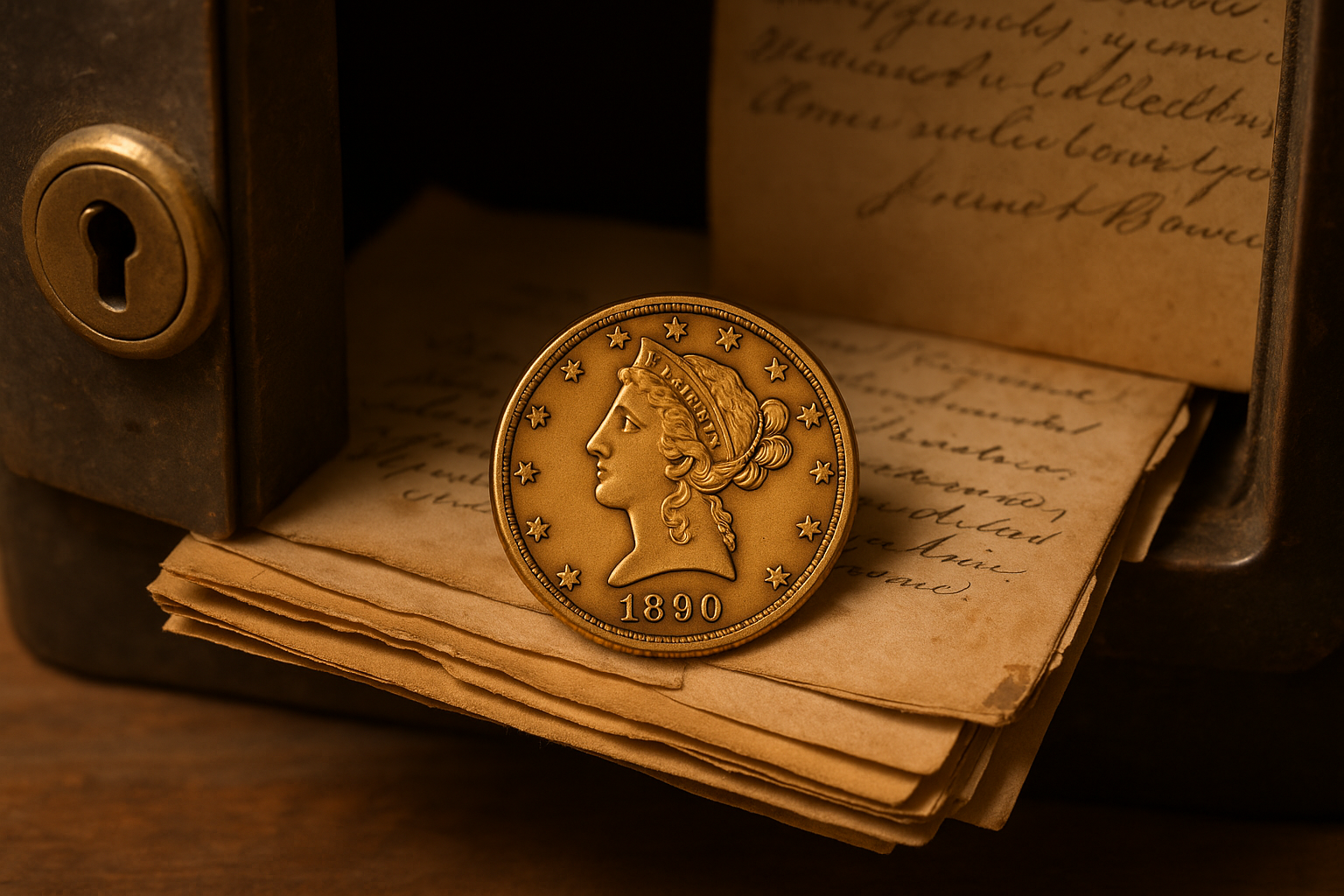During a home renovation in Boston, a homeowner pried open a sealed attic safe that hadn’t been touched in decades. Among old papers and photographs lay a velvet pouch containing several U.S. coins — one of which was a 1901 Liberty Head $10 gold coin in near-perfect condition. This stunning coin later sold for $97,000 at auction, cementing its place as one of the most impressive Liberty coin discoveries in recent years.
What Is a Liberty Coin?
A “Liberty coin” refers broadly to a variety of U.S. coins issued during the 19th and early 20th centuries that feature Lady Liberty on the obverse. These include:
- Liberty Head Nickel (1883–1913)
- Liberty Seated coins (1836–1891)
- Liberty Head Gold Coins — Half Eagles ($5), Eagles ($10), and Double Eagles ($20)
- Coronet Head coins, a specific Liberty design variant
These coins were produced by the U.S. Mint and reflect classical imagery, patriotic symbolism, and historically significant minting techniques.
Why the Liberty Head $10 Coin Is So Valuable
The Liberty Head $10 gold coin, also known as the Eagle, was minted between 1838 and 1907. Designed by Christian Gobrecht, this coin featured Lady Liberty wearing a coronet inscribed with the word “LIBERTY.” The reverse depicted a heraldic eagle with a shield, arrows, and olive branches.
Key attributes of valuable Liberty Head coins include:
- Low mintage years (like 1879-CC, 1901, and 1891-O)
- High-grade condition (MS65 and higher)
- Mint mark rarity (e.g., Carson City – “CC”)
- Original luster and strong strikes
- Gold content (90% gold, 10% copper)
The attic-discovered 1901 example was graded MS66, one of the highest known for that year, contributing to its five-figure sale price.
Liberty Coin Value Chart
Here’s a general guide for various types of Liberty coins by type and condition:
| Coin Type | Grade | Estimated Value |
|---|---|---|
| 1901 $10 Liberty Head (MS66) | Ultra Rare | $90,000 – $110,000 |
| 1883 Liberty Nickel (no CENT) | VF20 | $20 – $40 |
| 1893 $5 Half Eagle (AU55) | $1,200 – $1,500 | |
| 1857-S $20 Double Eagle (Shipwreck) | XF45 | $6,000 – $8,500 |
| 1871-CC Liberty Seated Dollar | VF30 | $4,000 – $6,000 |
Condition, mint mark, and metal content (silver or gold) play significant roles in determining value.
Where to Find Liberty Coins Today
Liberty coins often surface in:
- Estate collections
- Old safes or jewelry boxes
- Vintage bank envelopes
- Family heirlooms
- Unsearched coin jars
Because many of these coins are over 100 years old, they are seldom found in circulation but may still exist in personal or inherited collections.
How to Authenticate and Preserve a Liberty Coin
Before attempting to sell a Liberty coin, ensure it is:
- Verified by a reputable third-party grading service like PCGS or NGC
- Stored in a non-PVC coin holder to avoid damage
- Not cleaned, as this can reduce collector value
- Photographed clearly if listing online
If you believe the coin is exceptionally rare, consider consulting a professional numismatist for verification and potential auction assistance.
Conclusion
The discovery of a rare Liberty Head coin in a forgotten attic safe reminds us of the enduring value — both financial and historical — of classic U.S. coinage. Whether it’s a $5 Half Eagle or a seated silver dollar, Liberty coins continue to fascinate collectors with their elegant designs, low mintages, and intrinsic value. If you come across one, don’t underestimate its worth. It could be worth tens of thousands of dollars, just waiting to be rediscovered.
FAQs
What is the most valuable Liberty coin?
The 1907 High Relief Double Eagle and select Carson City mint Liberty coins can exceed $200,000 in top condition.
How much gold is in a $10 Liberty Head coin?
Each $10 Liberty coin contains 0.48375 troy ounces of gold and weighs 16.718 grams in total.
Can Liberty coins still be found in circulation?
Rarely, if ever. Most Liberty coins were removed from circulation decades ago, but they may appear in collections or inherited estates.

